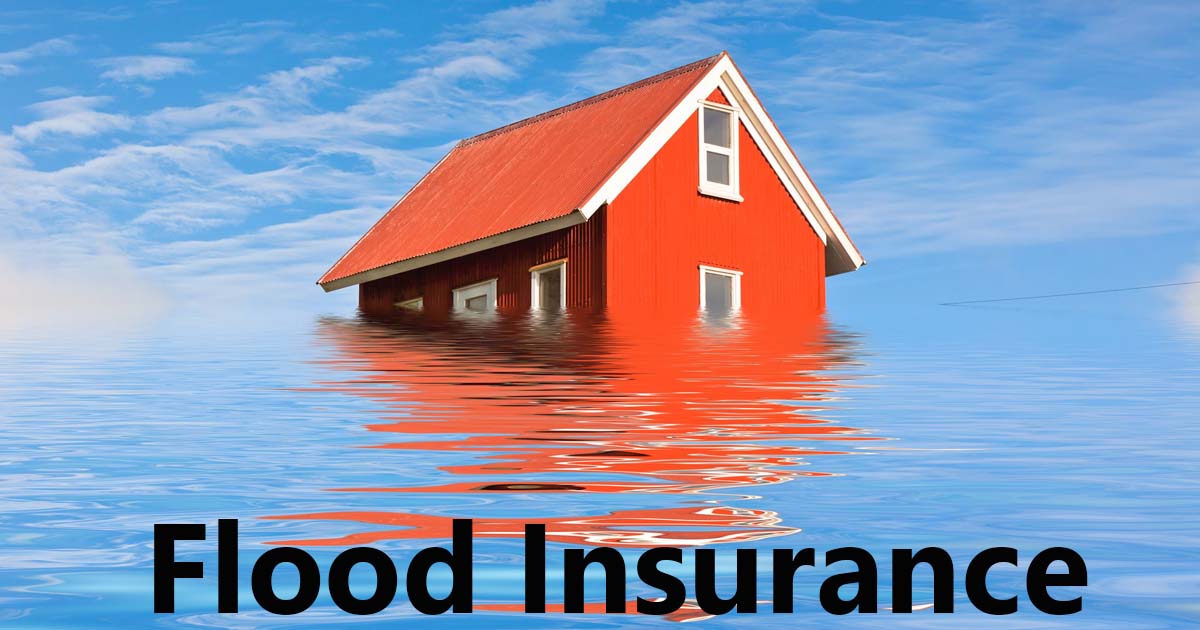Flood Insurance : Homeowners often invest substantial effort and resources into protecting their homes from various hazards like theft, fire, and storms. However, one crucial aspect of home security that is often overlooked is flood protection. Flooding can cause devastating damage to properties, leading to significant financial losses and emotional distress. While flood insurance might not prevent flooding itself, it serves as a crucial safety net, providing financial coverage for repairs and restoration. In this article, we will explore ten ways to secure your home with flood insurance and ensure your peace of mind in the face of natural disasters.
1. Understand Your Flood Risk
The first step in securing your home with flood insurance is to understand your property’s flood risk. Many homeowners underestimate their vulnerability to floods, especially those who do not live in high-risk flood zones. However, floods can occur due to various factors such as heavy rainfall, snowmelt, storm surges, or dam failures. Utilize FEMA’s Flood Map Service Center or consult with a local insurance agent to assess your flood risk accurately.
2. Purchase Flood Insurance
Once you comprehend your flood risk, the next vital step is to purchase flood insurance. Standard homeowner’s insurance policies rarely cover flood damage, necessitating a separate flood insurance policy. The National Flood Insurance Program (NFIP) provides flood insurance to homeowners in participating communities. Additionally, private insurers also offer flood insurance options that may offer more extensive coverage than NFIP policies. Carefully compare policies to choose the best fit for your needs.
3. Know Your Coverage

Understanding the specifics of your flood insurance coverage is crucial. Flood insurance typically includes coverage for structural damage, electrical and plumbing systems, appliances, and permanently installed fixtures. It may also cover personal belongings such as furniture, electronics, and clothing. However, coverage limits can vary, so be sure to know the maximum amount your policy will pay for each category.
4. Consider Excess Flood Insurance
For homeowners who require higher coverage limits than the standard flood insurance provides, excess flood insurance is an excellent option. Excess flood insurance supplements your primary flood insurance policy, enabling you to protect your home and belongings adequately. This is particularly beneficial for high-value properties or homes located in areas with an elevated flood risk.
5. Evaluate Replacement Cost Vs. Actual Cash Value
When securing your home with flood insurance, consider the difference between replacement cost and actual cash value coverage. Replacement cost coverage will compensate you for the full cost of replacing damaged items, while actual cash value coverage takes into account depreciation, resulting in a lower payout. Opting for replacement cost coverage may require higher premiums, but it ensures you can fully recover the value of your possessions.
6. Understand Waiting Periods

It is essential to be aware of waiting periods associated with flood insurance policies. Most policies have a waiting period from the time of purchase before coverage takes effect. This waiting period can vary from a few days to several weeks, so it’s vital to secure your insurance well in advance of any potential flood threats.
7. Mitigate Flood Risks
While flood insurance is crucial for financial protection, taking proactive measures to mitigate flood risks can also significantly reduce potential damage. Elevating utilities and appliances above the base flood level, installing sump pumps, and utilizing sandbags during emergencies are just a few examples of flood prevention techniques. Implementing these measures may even lead to reduced insurance premiums.
8. Review And Update Your Policy Annually
As circumstances change, it is vital to review and update your flood insurance policy annually. Changes in your property value, additions or renovations, or alterations to your flood risk might necessitate adjustments to your coverage. Regularly communicating with your insurance agent ensures that you have adequate protection at all times.
9. Maintain An Emergency Plan

Alongside flood insurance, having an emergency plan in place can be a lifesaver during a flood event. Create an evacuation plan for your family, prepare an emergency kit with essentials, and designate a safe meeting point. Share the plan with all household members, and practice emergency drills to ensure everyone knows what to do if a flood occurs.
10. Stay Informed
Lastly, stay informed about weather forecasts and flood alerts in your area. Pay attention to flood warnings and advisories issued by local authorities and be prepared to take action if necessary. Being proactive and well-informed can make all the difference in mitigating flood damage and ensuring the safety of your loved ones.
Conclusion
Protecting your home from potential flooding is a crucial aspect of home security. Securing your home with flood insurance provides financial protection and peace of mind during natural disasters. Understanding your flood risk, purchasing the right coverage, and taking proactive measures to mitigate risks are essential steps in safeguarding your home. By staying informed and prepared, you can face flood events with confidence and protect your most valuable asset – your home. Don’t wait for the next flood; act now and secure your home with flood insurance.
Also Refer : The Top 10 Business Insurance Plans You Can’t Ignore
Source Image : Freepik.com





